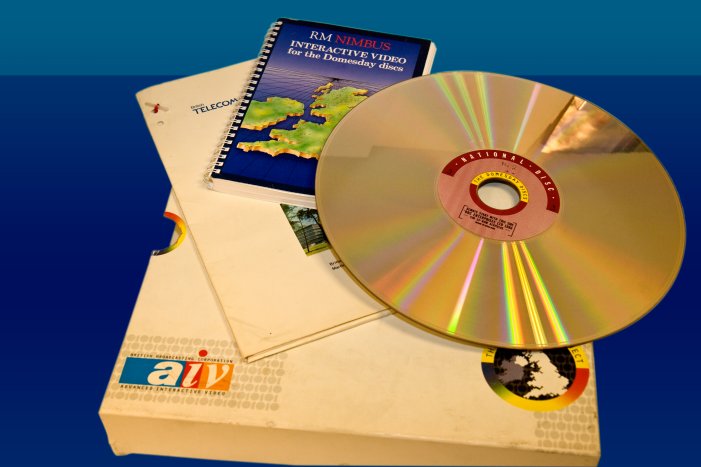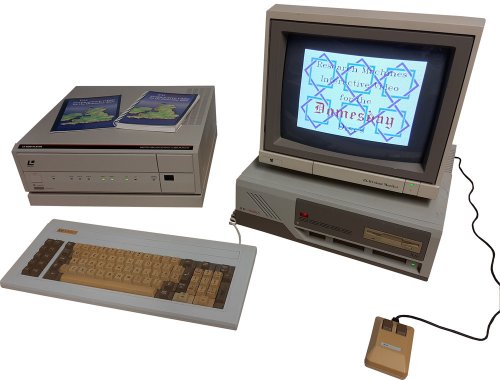 |
W E L C O M E | Version 3.00C |
BBC Domesday System |
||
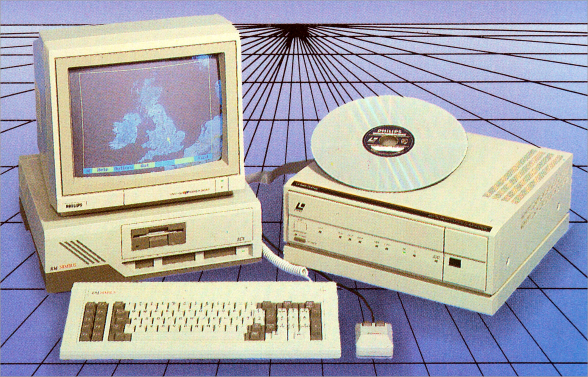
In the summer of 1985, schools from all over the United Kingdom set out to survey their area. Some information came from maps and local directories, but most came from looking and asking.
The Nimbus PC-186 was one of only 2 computer systems that were able to interface to the Philips VP-415 Laserdisc player and access the content held on the specially created discs that were made as part of a partnership between Acorn Computers, Philips, Logica and the BBC to mark the 900th
anniversary
of the original Domesday Book.
I understand an IBM PC version was planned, however as yet this has been untracable.
The Nimbus system did not have the same following as the one made for the Acorn BBC Master although various Nimbus branded documentation exists. Anecdotal information suggests that the Nimbus version was not as capable as the Acorn version.
The project, which included contributions from 10,000 to 14,000 schools and is thought to have cost over £3m, was recorded in 1986 on two newly developed interactive video discs from Philips. The discs were named 'The Community Disc' which was double sided and 'The National Disc' which was single sided.
The National disc is a more adventurous disc than the other and is fun to use, wheras the Community disc is more for educational and fact-finding purposes i.e to be used merely as a sophisticated map (Rod Harrision)
Each school was sent a list of four different things to do. The area they were given was divided into twelve kilometre squares. For each square, the children had to decide the three most important types of 'land cover' . What was on the land? Woods? Farms? Housing? For each square they counted how many amenities there were . Sixty one things were listed to count, from factories to hospitals. The schools also chose four photographs which they thought best showed what their area was like, and wrote captions to the photographs. Last of all, they wrote twenty pages about the special things which happened in their area .
Schools used their microcomputers to record the information. Each school typed their essay and data into the computer,· and the information was stored on tape or disc . Then they posted their tape or disc and their photographs to the BBC.
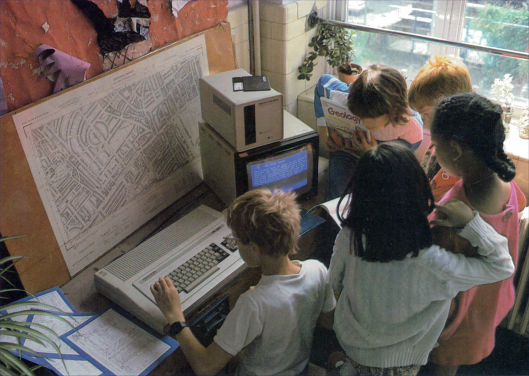
Pupils of Fox Primary school, London editing their section of information on an RM 480z
The Nimbus implimentation of the Domesday System consisted of:
A Nimbus computer with a keyboard and mouse
Nimbus Winchester controller card
with external connector
A Philips VP4l5 LaserVision player.
A Philips CM 8533 colour monitor.
RM Nimbus Retrieval System for Domesday Software (floppy disk)
Installing the Domesday System
To connect them together, three cables are supplied:
A ribbon cable to connect the Nimbus external winchester
socket to the VP4l5 rear panel.
A cable with an 8-pin DIN connector at one end and a 6-pin
DIN connector at the other end to connect the Nimbus colour
monitor socket to the VP4l5.
A SCART cable (thick cable with 20-way Euroconnectors at
each end) to connect the VP4l5 to the 8533 monitor.
The Domesday system also includes a 3.5" floppy disk containing
operating software
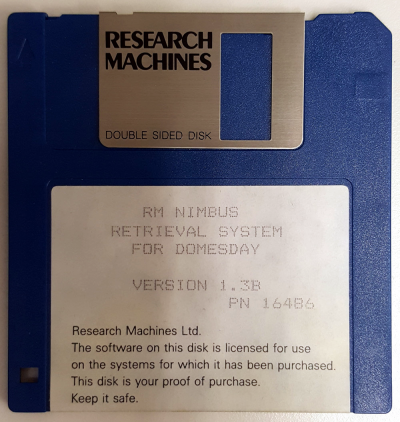
Connection Guide
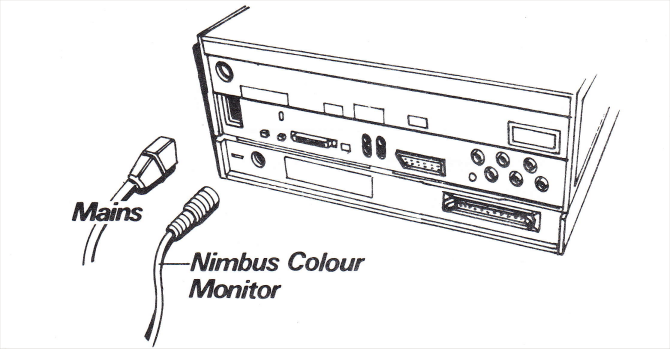
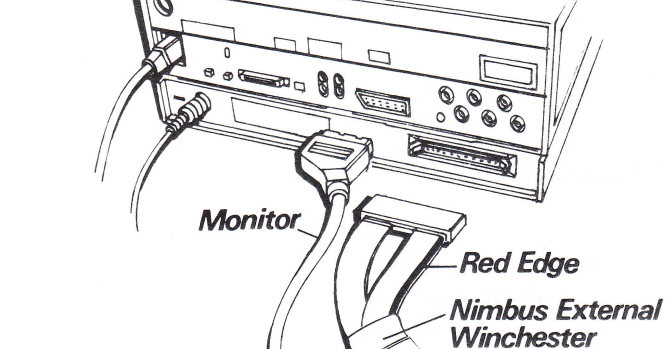
 |
Main Menu |
